
Serbia’s capital, Belgrade, has a rich history and nightlife that can keep you entertained for weeks on end. However, there is so much more to see in Serbia outside of Belgrade. Let’s travel through time and discover Serbia’s coolest fortresses from the Middle Ages on a day trip from Belgrade!
Surprisingly enough, despite visiting Serbia over thirteen times, I have never made it out to some of the iconic medieval fortresses on the Danube River before. Wanting to explore new parts of Serbia, my local friends and I decided to do a day trip to do some fortress hopping to check out Golubac Fortress, Ram Fortress, and Smederevo Fortress (Serbian: Golubac Tvrdjava, Ramska Tvrdjava, i Smederevska Tvrdjava).
Table of Contents
A Little Balkan History Lesson
During the early 14th century, the Ottoman Empire crossed into Europe and began pushing into the Balkans. In response to this threat, the cities and states along the Danube began to construct fortresses to protect their lands from imminent invasion. Unfortunately, Serbia was slowly conquered by the Ottoman Empire over the course of a century and remained under its rule for over 400 years.
Many of the fortresses along the Danube River in Serbia were either built shortly before Ottoman rule in an effort to prevent the Ottoman Empire from expanding into Serbia and further into Europe, whereas some were further fortified or built by the Ottomans to strengthen their foothold on the Danube.
How to Get There
The best way to see all three Fortresses in this article is to rent a car or hire a driver. Although they are all located on the Danube River, they are fairly far apart. It takes about an hour drive between each, and I recommend starting with the Golubac, which is the further one away and working your way back to Belgrade stopping at Ram Fortress and then Smederevo Fortress due to the former having the shortest operating hours.
You can also choose to a group tour of the three fortresses as there are numerous group tours from Belgrade that provide roundtrip transportation.
Golubac Fortress (Golubac Tvrdjava)
We started our day early in the morning and drove to the furthest one on the list, Golubac Fortress. If you don’t get lost like we did, it should take you only 2 hours from Belgrade, instead of over 3 hours—a wild adventure that involved freeway closures, driving through random villages, encountering a heard of sheep, and getting pulled over by the police only to realize I didn’t have my documents on me (oops!). After an exciting drive, we arrived at our first destination of the day.
History of Golubac Fortress
Located on the border of Romania, two hours east of Belgrade on the Danube River, Golubac Fortress is one of Serbia’s most impressive historical sites. Built most likely in the 14th century, Golubac Fortress has successfully repelled over 120 attacks. It has changed hands many times by political agreements, being held by the Serbs, Turks, Bulgarians, Hungarians, and Austrians at different points in history, but it has never been conquered by any army!
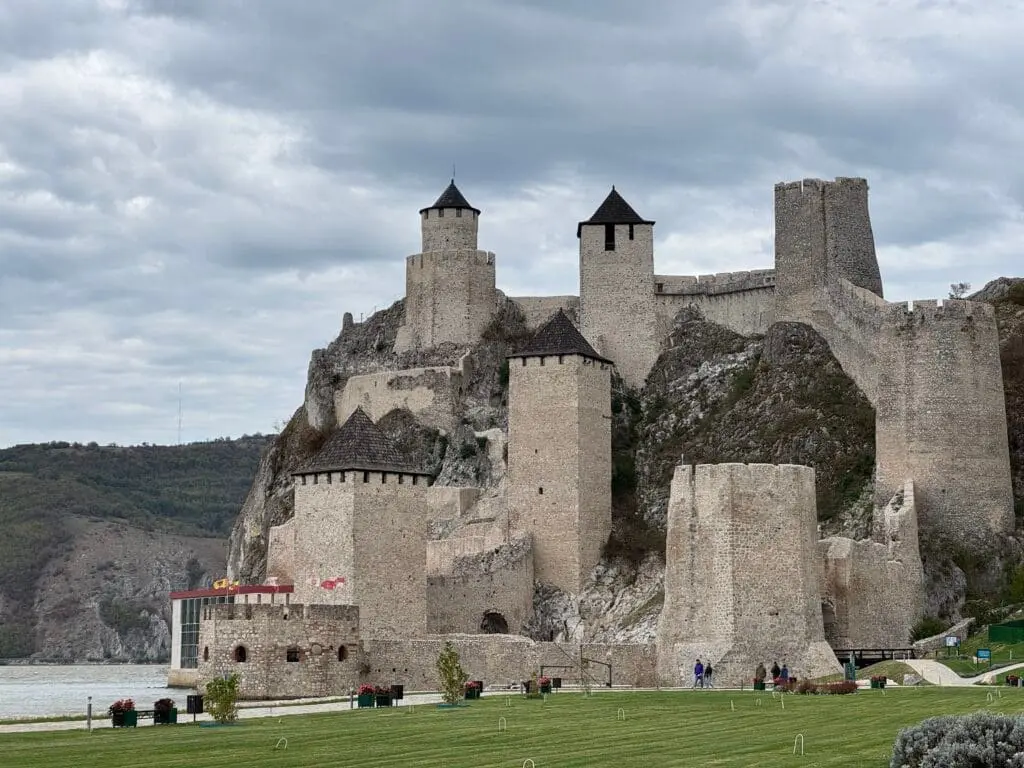
There is a lot of mystery surrounding the origins of Golubac Fortress. From 803 to 1018, the area belongs to the First Bulgarian Empire, then to the Byzantine Empire until 1193, and the Second Bulgarian Empire until 1257, before belonging to the Kingdom of Serbia. Control over the region switch hands several times more between the Serbs, Hungarians, and Bulgarians, ultimately falling under Ottoman possession in the 15th century. With no concrete records of when construction started, it’s uncertain whether Golubac was built by the Bulgarians, Serbs, or Hungarians. It’s also a mystery as to how many towers Golubac originally had.
Visiting Golubac
Golubac Fortress consists of 3 main compounds guarded by 9 towers and a palace that you can explore. The fortress is divided in four zones based on difficulty:
- Green- the lowest section; open for all visitors
- Blue- only for adults; towers 3 and 4
- Red- only for adults with assigned special escort
- Black- only for adults with assigned special escort, and applying specific safety procedures of physical fitness, special attire and footwear, no fear of snakes, weather restrictions, and allowed access for only two visitors at the time
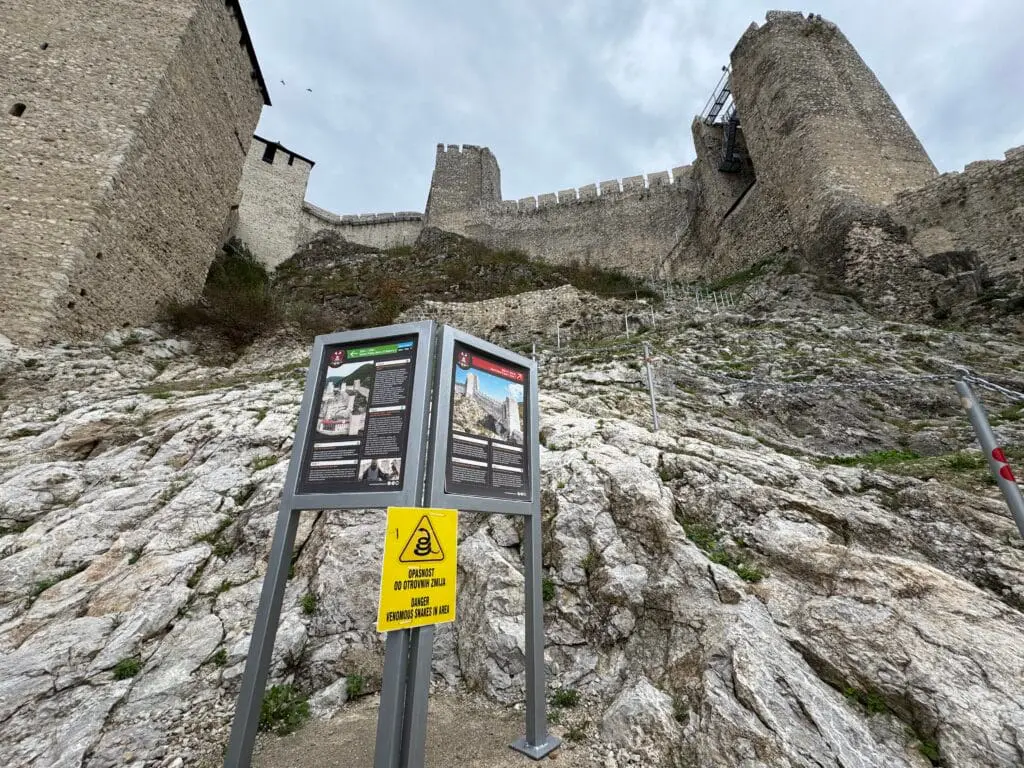
Each are priced separately, with blue zone tickets only being available on the Friday-Sunday and red and black zone tickets available under special reservations due to the dangers and accessibility issues they pose. There are many signs as you approach the base of the rocky hill, which you need to climb up to access the red and black zones that inform you of the presences of venomous snakes in the area. I’ve never seen so many warnings and requirements to access a historical site before, sparking my curiosity.
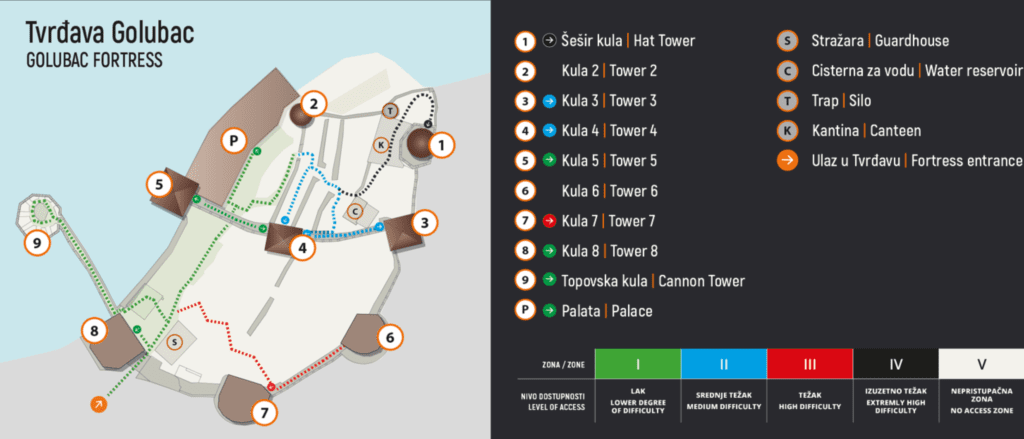
I went with friends on a drizzly Wednesday in September, so we only could purchase the green zone tickets, unfortunately. Given the chance, I would 100% have purchased the black zone tickets. If you have you heart set on doing one of the more difficult zones, call ahead to confirm availability and plan accordingly.
Green Zone is still a wonderful introduction to Golubac Fortress with three towers and the palace to explore. It should be obvious, but these towers are not very accessible if you have any handicaps, as they were built over 600 years ago. There are narrow staircases and many levels. You’ll be getting a leg workout by the end of the day for sure! As you explore the towers, there are plaques and displays inside where you can read about the history of the fortress.

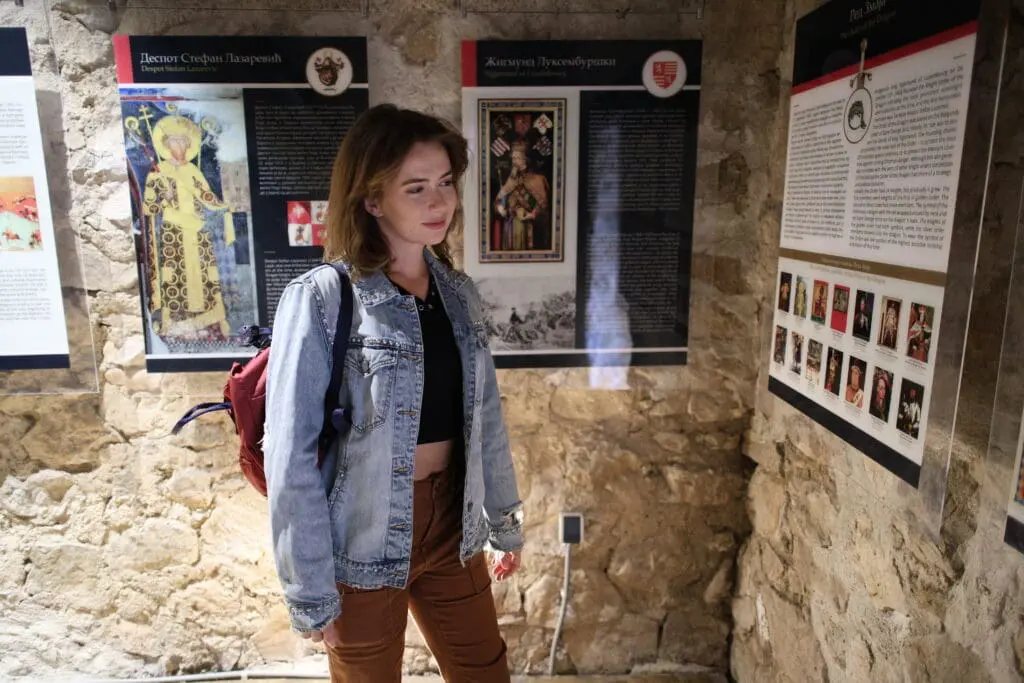
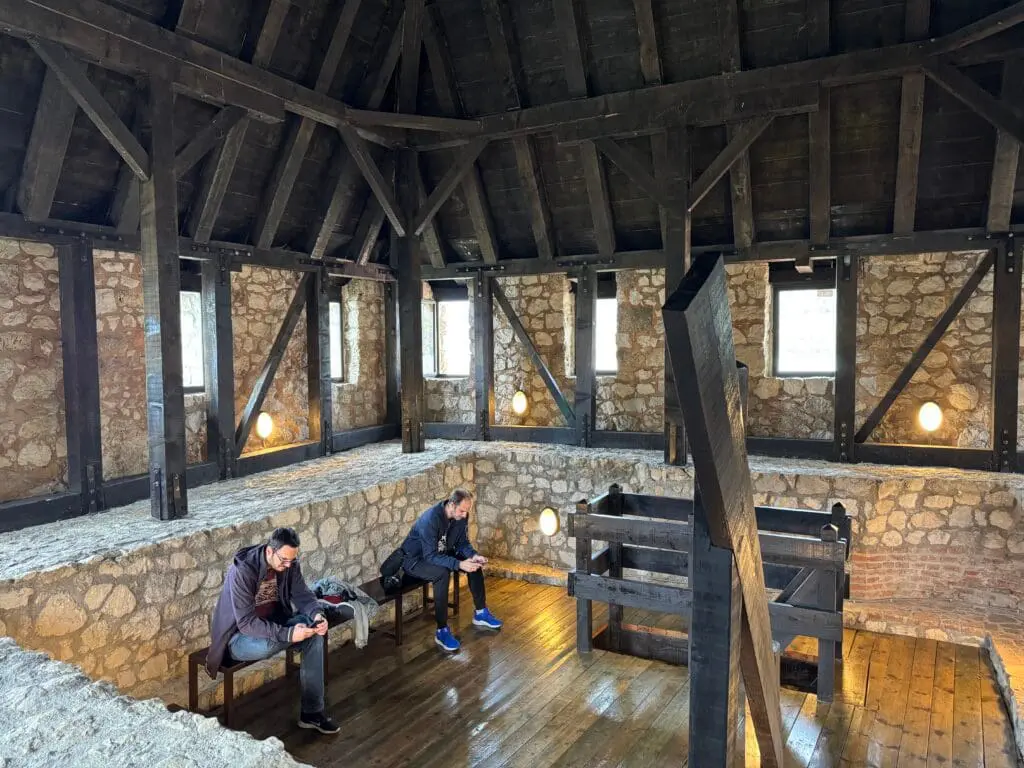
Be prepared to spend an hour to two hours at Golubac with a basic green zone ticket. As a history buff myself, I enjoyed learning about the history of Golubac and the area, but my favorite part was the architecture and views! You feel like you’re in Game of Thrones as you admire the Danube from the fortress.
Fun Fact!
Golubac directly translated from Serbian means “Pigeon City”. The exact reason for the name is unknown, but several myths exist to try to explain the name.
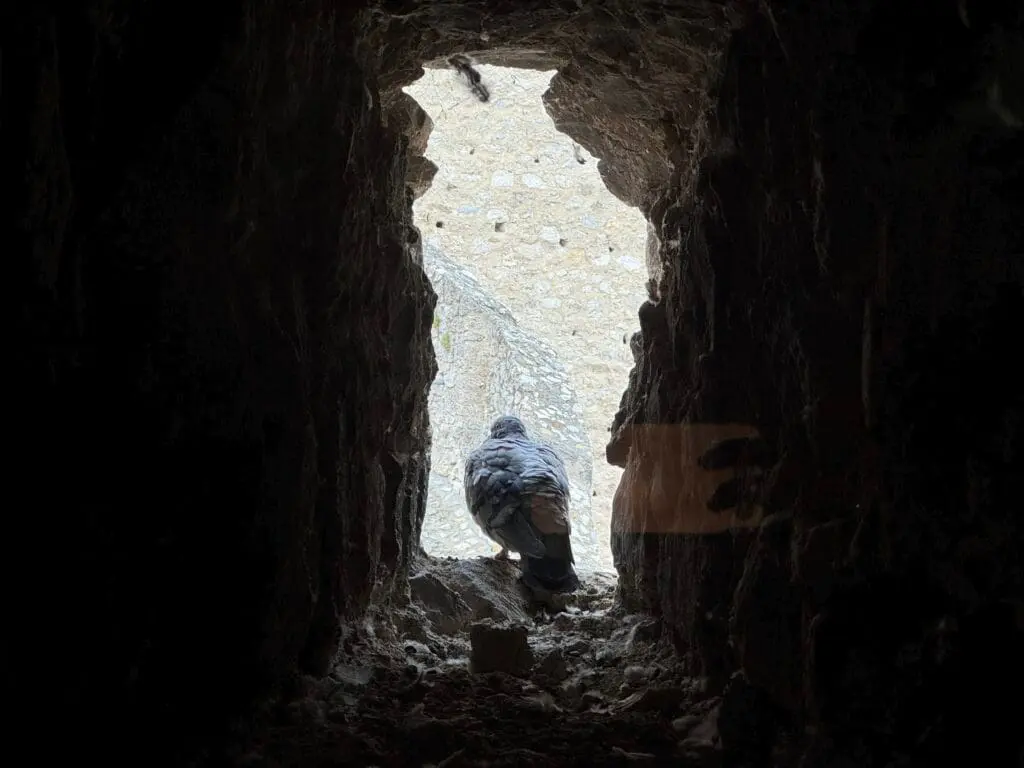
Ram Fortress (Ramska Tvrdjava)
After Golubac, we made our way to Silver Lake (Srebrno Jezero) for lunch before continuing to Ram Fortress.
History of Ram Fortress
Built in the 1483 by the order of Ottoman Sultan Beyazid II in order to enhance protection from the Hungarian excursions from the north, Ram Fortress is the oldest artillery for in Serbia. Even though this is fortress is the newest of the three (Isn’t it funny to call something built in the 15th century “newer”?) the area in which it was built is not new at all.
There was an existing Roman mausoleum, which The Ottomans didn’t demolish, but instead built the fortress around it. Archeologists even recently discovered artifacts pointing to the pre-Roman habitation of the Celts in the area as well.
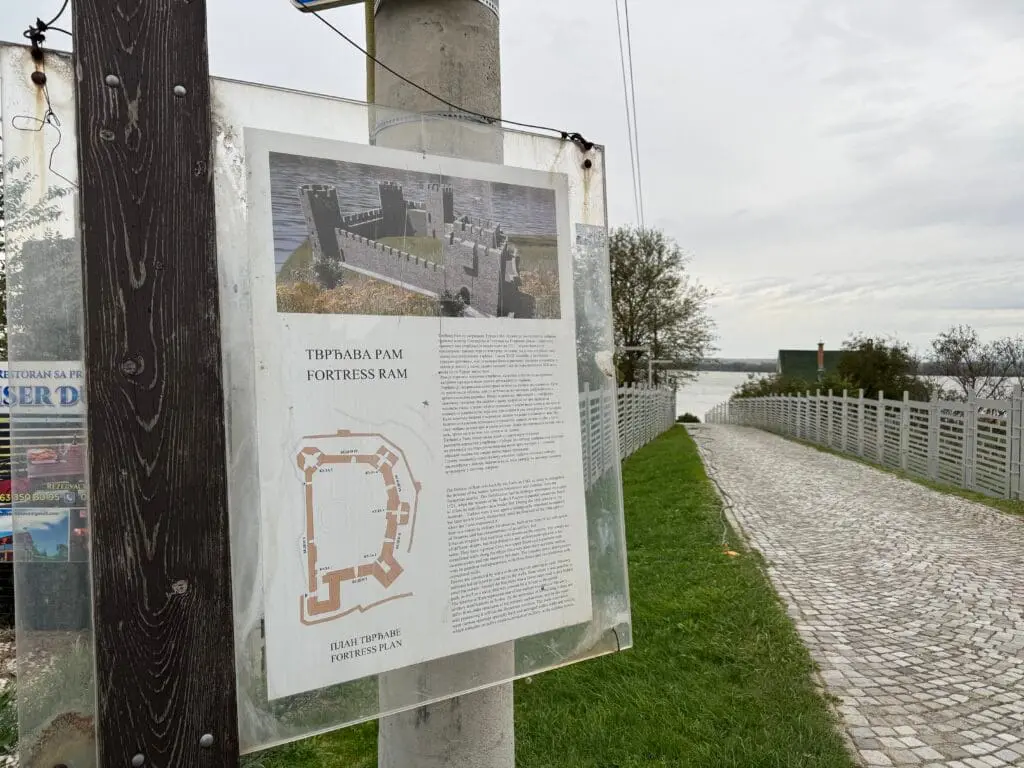
Visiting Ram Fortress
Despite being in good condition and well preserved, it seems to be less popular than Golubac. For only 300 dinars (roughly $3), you can access Ram Fortress and explore on your own, listening to an audio guide on your phone by using the QR codes hung around the fortress.
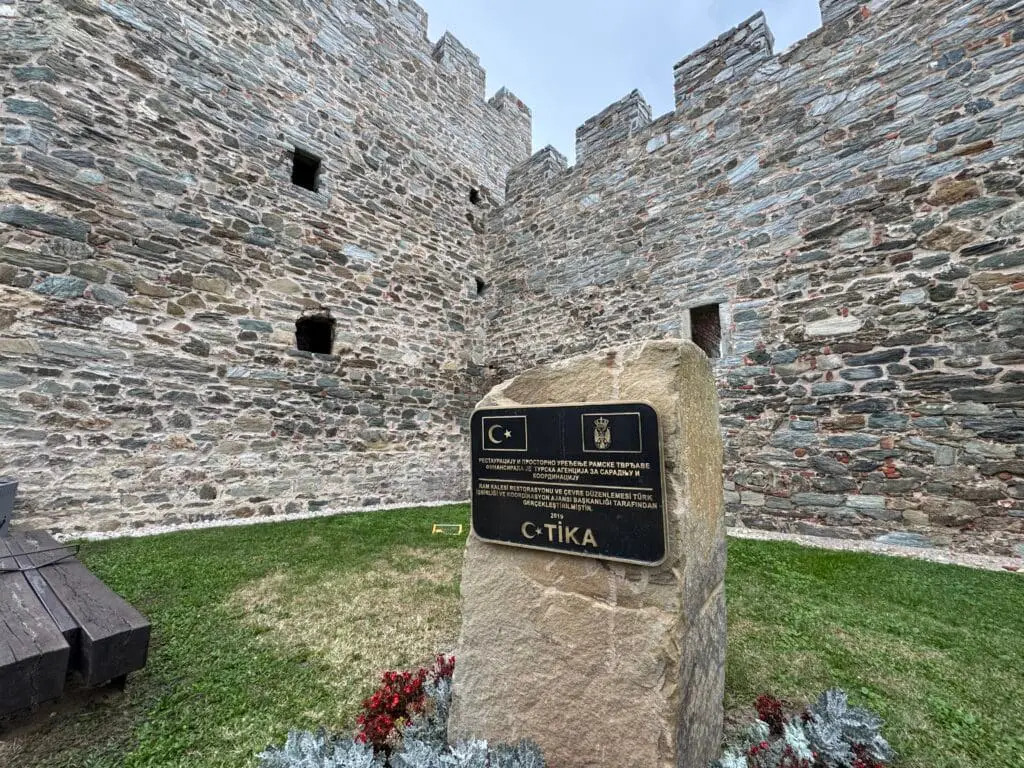
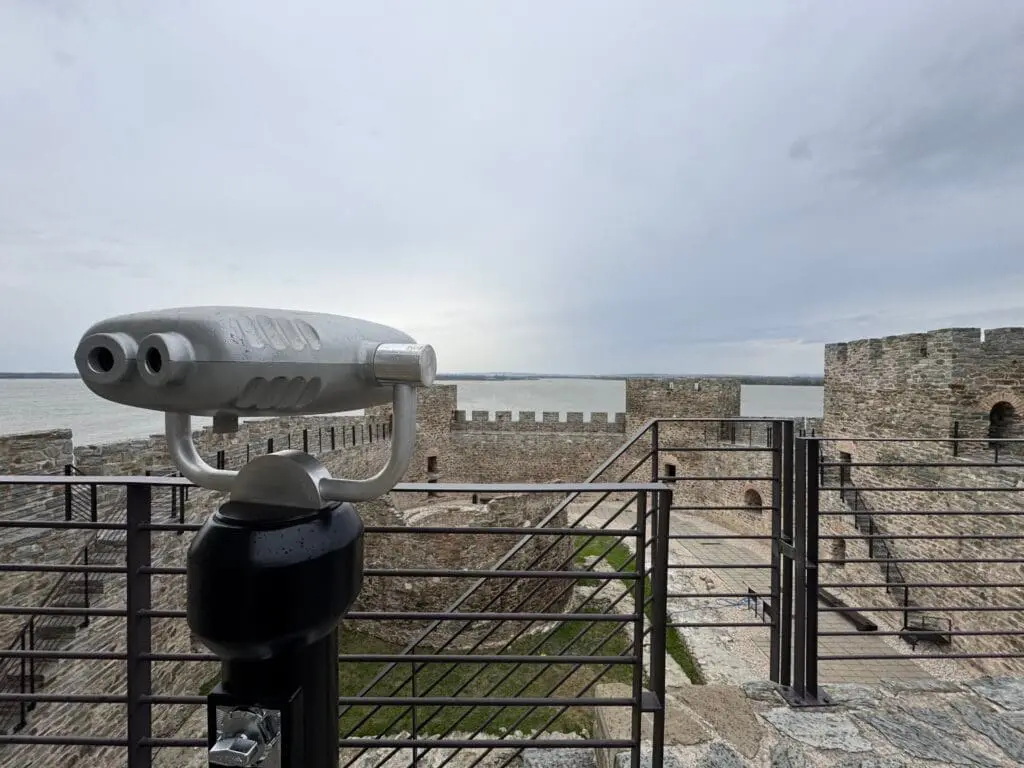
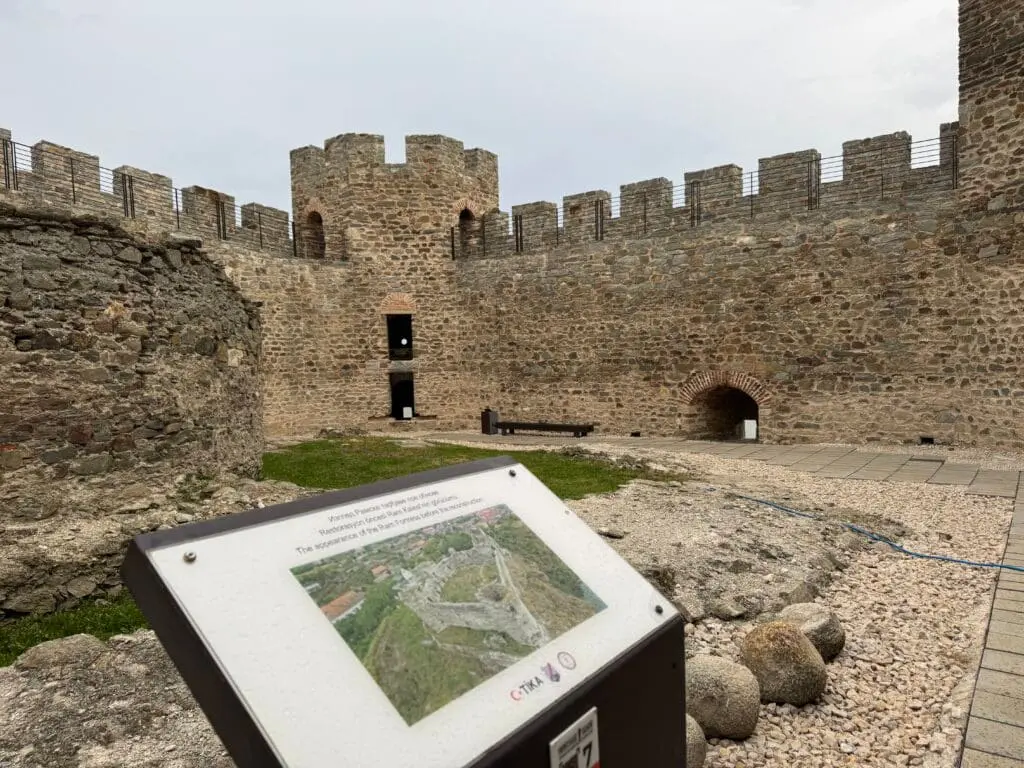
We were the only ones there when we went. The freedom to roam on our own without other visitors or employees breathing down our necks was a special experience. I couldn’t help but think of the iconic line from Borat, “King in the Castle, King in the Castle, I have a chair! Go do dis, go do dis, King in the Castle”.
Since my long time friend is a professional photographer, we were able to take advantage of the fortress being completely empty to do an impromptu photoshoot.

Due to its position on a rock above a widening in the river, Ram Fortress claims to have most beautiful Danubian sunset. Sadly, it was too cloudy the day we visited, but I’ve seen several photos from other visitors online showcasing what looks like a pretty breathtaking sunset from the fortress’s walls.
Fun Fact!
When walking about in the fortress, you’ll notice a peculiar tower within the tower that has no windows. For years the tower in question was referred to the “Mysterious Tower”. Debate ensued amongst archaeologists whether this tower served as a mosque or pantry of some sorts, but were proven wrong during the 2017 reconstruction of Ram Fortress when a tablet was discovered.
Placed by one of the legionnaires of Roman emperor Claudius, the tablet describes the tower being built and dedicated to the Roman God, Jupiter. Remember before the Ottoman artillery fort was built, a Roman mausoleum occupied the same land!
Smederevo Fortress (Smederevska Tvrdjava)
From Ram Fortress we travel another hour west to our last destination of the day and one of the largest fortresses in the Balkans, Smederevo Fortress.
History of Smederevo Fortress
Despot Stefan Lazarević was in a precarious situation, having to delicately maintain the Serbian Despotate between the Ottomans and Hungarians. Therefore, in 1403 he accepted Hungarian vassalage (a fancy word for submission and loyalty to a lord) and established the new capital in Belgrade. However, after his death, Stefan’s nephew and successor, Đurađ Branković, had to return Belgrade to the Hungarians. He then decided to build the new capital in Smederevo and started construction on Smederevo Fortress.
Standing at the convergence of the Danube and Jezava Rivers, Smederevo Fortresses was constructed between 1427 and 1430 and later further fortified by the Ottomans after they had taken the city of Smederevo in 1459.
Forming a near perfect triangle by the two rivers and an accompanying moat that protects the third wall, the fortress consists of two parts—a fortified castle with a ruler’s court and an urban settlement all within its protected walls lined with two dozen towers. It wasn’t common before the 14th century to have rulers’ residences be fortified structures, but due to the general dangers at the time and encroaching Ottoman Empire, this was necessary.
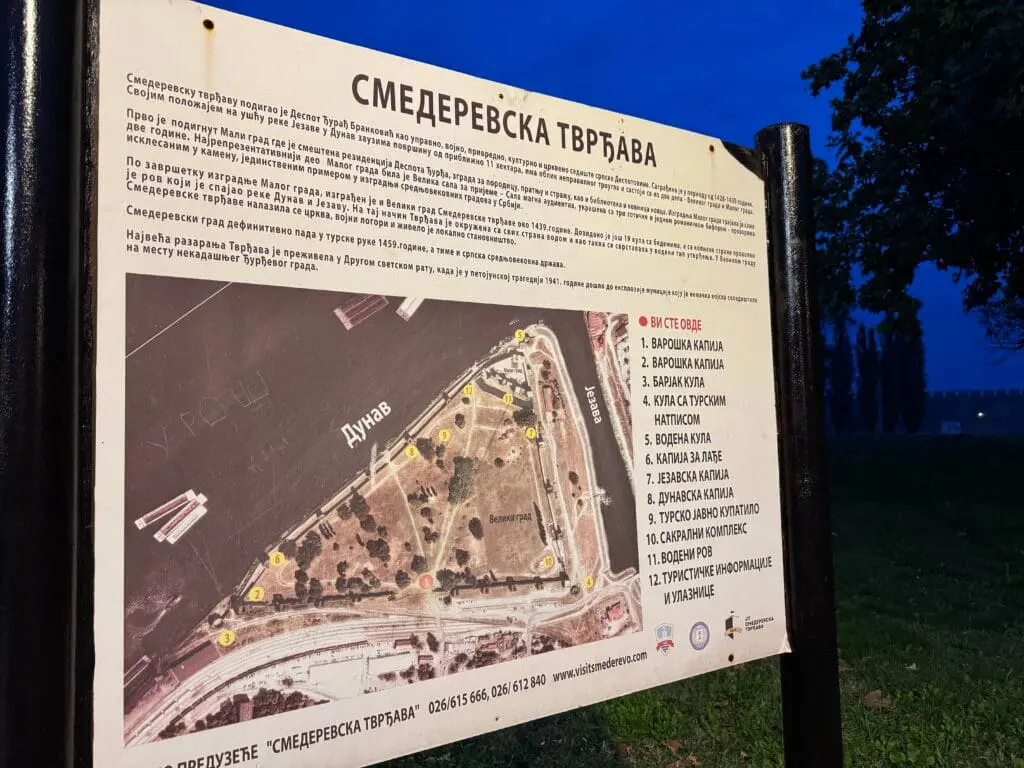
Location is everything as they say with real estate– Smederevo Fortress’s strategic location allowed the Serbian capital to remain near the Christian Kingdom of Hungary while also later satisfying the Ottoman Empire by controlling passage of the Hungarians into Morava Valley. Its position connecting the Balkans to Central Europe made it an important religious and commercial center.
It was relatively well preserved over the centuries, having survived several sieges by Ottomans and Serbs. Sadly, during WWII it was heavily damaged. The German forces used the fortress for ammunition storage, which exploded in 1941. The force of the explosion was so great it took out most of the southern wall, the train station nearby, and many of the buildings in the city, resulting in 2,500 deaths and 5,500 wounded. It was further damaged in 1944 by Allied bombing.
You can see the effects of the explosion and bombing from the parking lot as some of the towers look as if they were going to tip over at any moment.
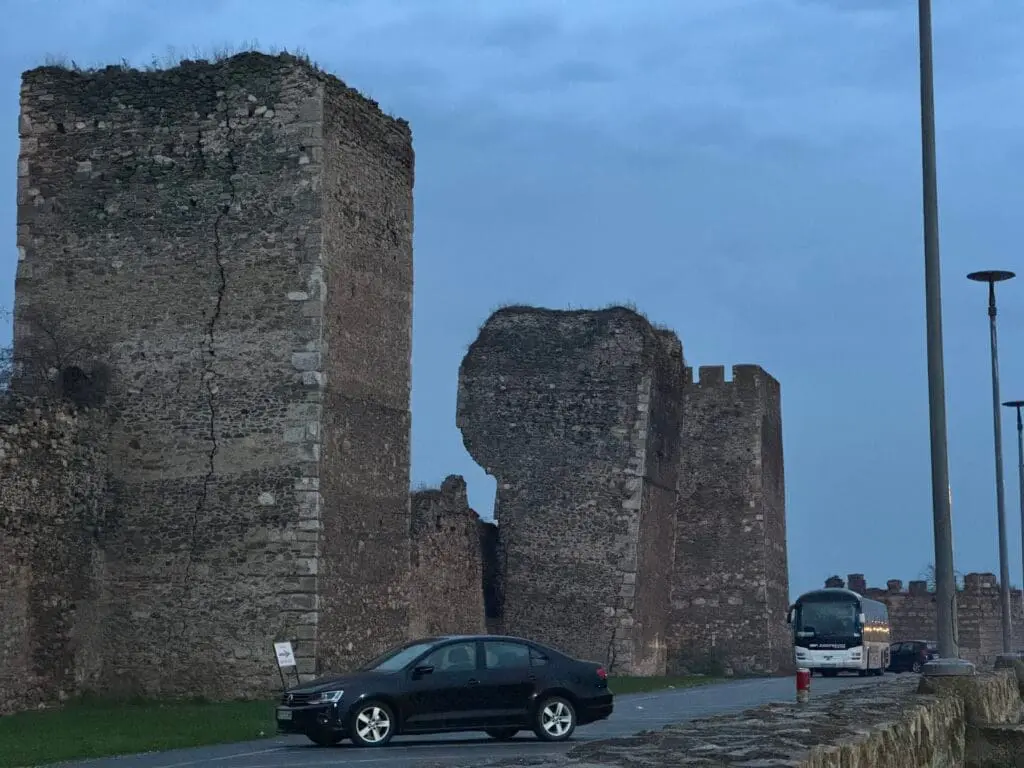
Visiting Smederevo Fortress
After parking, you enter Smederevo Fortress and immediately encounter a large park. Today, this area is used for recreation, events, and performances. There’s even a running track within the fortress walls, where you can see athletes training at all times of the day.
The fortress is free to enter, but if you wish to enter what is known as the “Small Town”, it costs 120 dinars (roughly $1). There are guided tours as well for 1000 dinars ($10). The small town was my favorite part of the entire day out of all three fortresses.
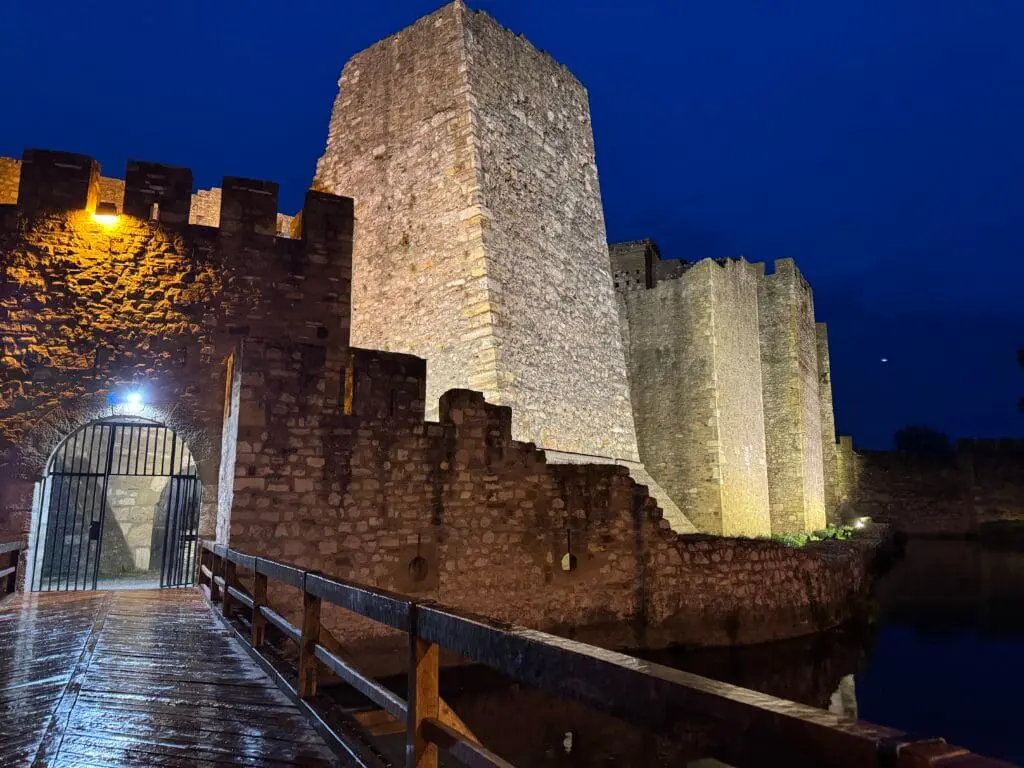
As you walk across a small moat, it’s as if you stepped back in time into the former audience hall and palace with remnants of impressive double arched windows. Although mere ruins now, the grandeur is still palpable.
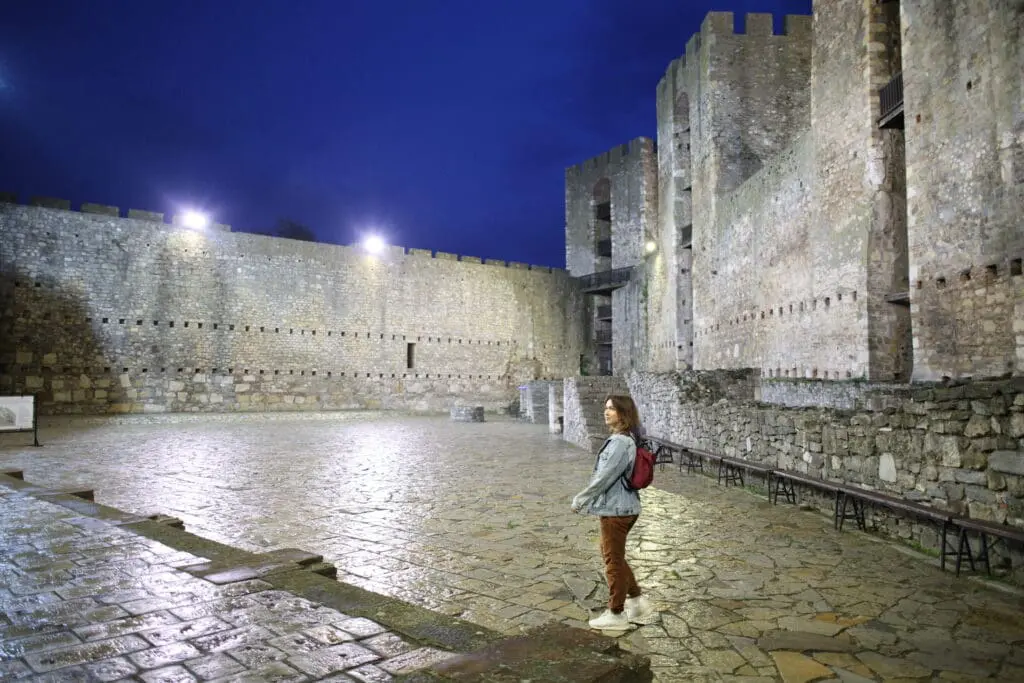
We went after nightfall, so with street lamps and spotlights illuminating the fortress, there was a spooky feel that made me giddy with excitement. This was made all better with the on-and-off-again drizzle of rain we had been experiencing all day. Who knows what ghosts could have been amongst us as we explored the former castle!
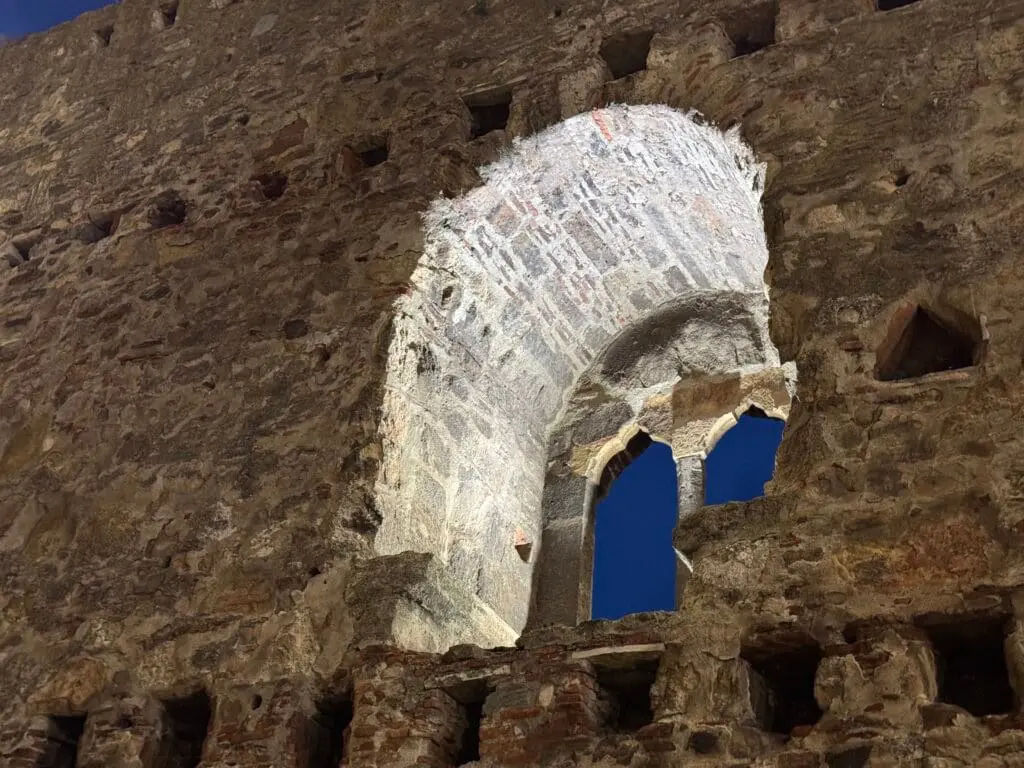
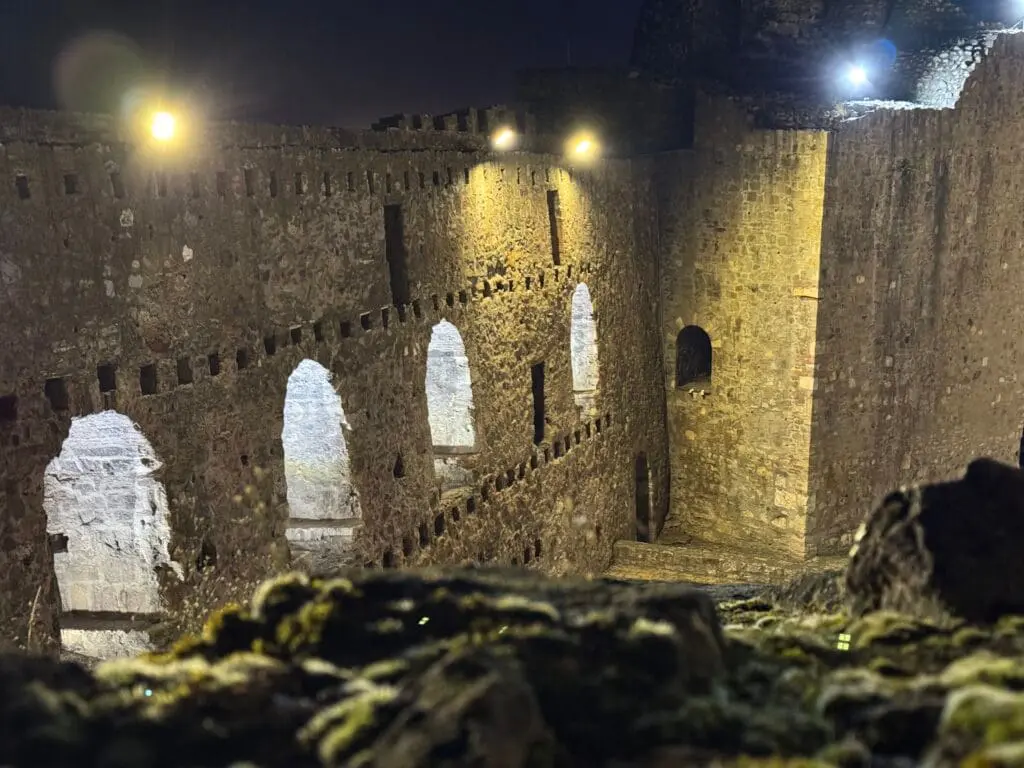
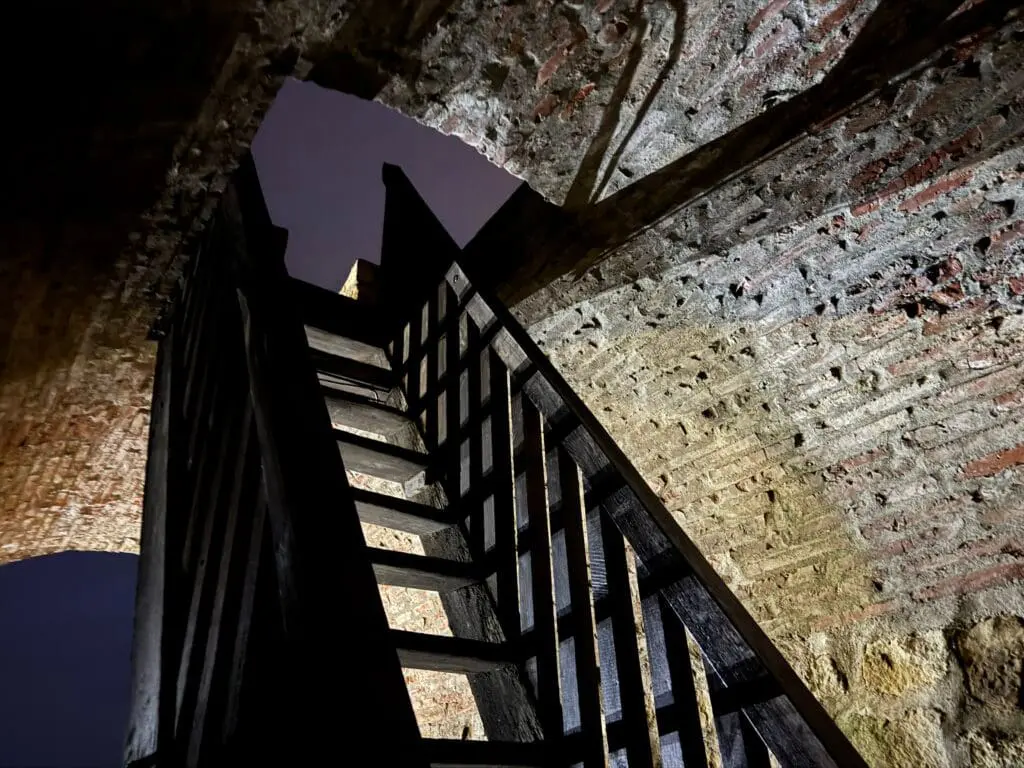
Once again, like with Ram Fortress, we had the entire place to ourselves and were able to explore in peace, climbing up towers using questionable, steep wooden stairs. You could barely see the marina and harbor next to the fortress because of the dark, cloudy night, but I imagine the view during the day must be stunning from up there.
As we didn’t do a tour, there wasn’t much information available at the time. I recommend doing a tour or doing some research on your own prior to visiting to get the most out of your experience.
Fun Fact!
Although not yet official, Smederevo Fortress is on the tentative list for nomination to become a UNESCO World Heritage Site.
After we finished exploring Smederevo Fortress we grabbed some palacinke (Serbian crepes) at a café across from the fortress before driving an hour back to Belgrade to end our day of adventuring at three different fortresses along the Danube. Each had amazing history and architecture and views to offer, making it difficult to choose a favorite. If you find yourself in Serbia, be sure to check out these three medieval fortresses and many more along the Danube River!

